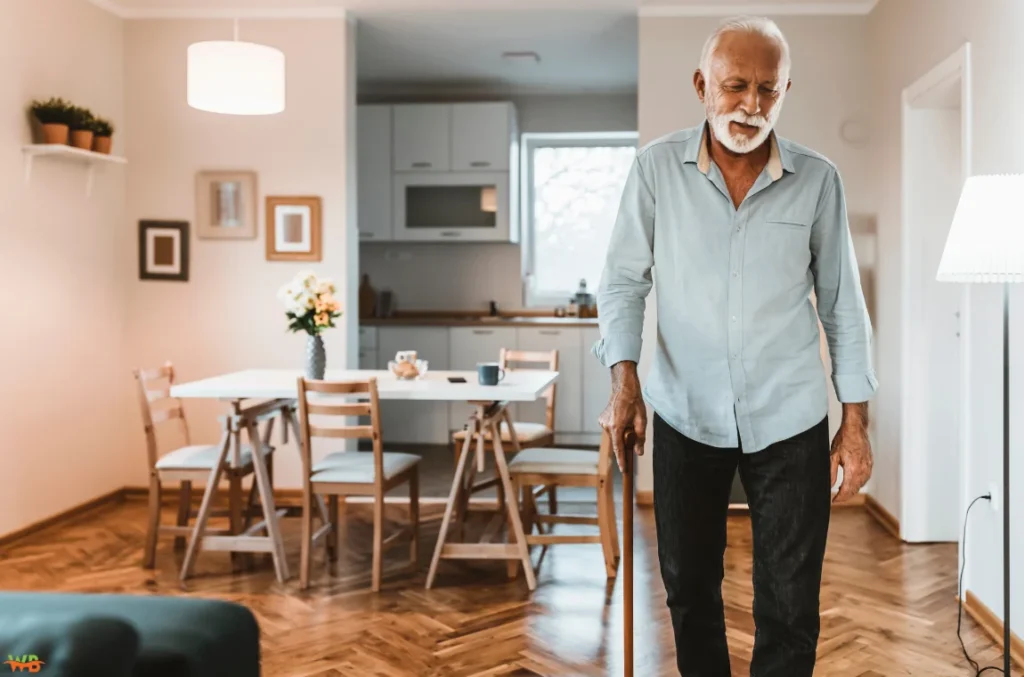
Falls can be a severe health risk for older adults, potentially leading to injuries, loss of independence, and decreased quality of life. As our loved ones age, we must proactively prevent accidents and ensure their safety. This article explores effective methods to reduce fall risks and create a safer environment for seniors.
Understanding the Risks
Before implementing prevention strategies, it’s important to recognize the factors that contribute to falls among older adults:
- Declining balance and muscle strength
- Vision problems
- Medication side effects
- Chronic health conditions
- Environmental hazards
By identifying these risk factors, we can develop targeted approaches to mitigate them and promote senior safety.
Home Safety Modifications
One of the most effective ways to prevent falls is by making the home environment safer. Consider the following modifications:
Improve Lighting
- Install brighter bulbs in all rooms
- Install night lighting in the restrooms and halls
- Use motion-sensor lights for outdoor areas
Remove Tripping Hazards
- Clear clutter from walkways
- Secure loose rugs or remove them entirely
- Organize electrical cords along walls
Modify Stairs and Steps
- Ensure handrails are sturdy and easy to grip
- Add non-slip treads to bare wood steps
- Step edges can be marked with vivid, contrasting tape
Encourage Regular Exercise
Physical activity is crucial in maintaining balance, strength, and flexibility. Exercises for seniors should concentrate on:
- Balance training
- Strength building
- Flexibility improvement
- Cardiovascular endurance
Some suitable activities include:
- Tai Chi
- Yoga
- Water aerobics
- Walking
See a doctor whenever you start a new exercise regimen.
Regular Vision and Hearing Checks
Fall risk can be considerably increased by poor hearing and vision. Encourage seniors to:
- Have annual eye exams
- Update eyeglass prescriptions as needed
- Check hearing aids regularly
- Address any sudden changes in vision or hearing promptly
Medication Management
Many medications can cause dizziness or affect balance. To minimize these risks:
- Always examine all prescriptions with someone with medical expertise
- Discuss potential side effects and interactions
- If a drug raises your risk of falling, think about your options
- Utilize a pill organizer to guarantee accurate timing and dosing
Proper Nutrition and Hydration
A balanced diet and adequate hydration are essential for maintaining overall health and reducing fall risks. Ensure seniors:
- Consume enough calcium and vitamin D for bone health
- Stay hydrated throughout the day
- Limit alcohol consumption
Assistive Devices and Footwear
The right tools and footwear can significantly improve stability and reduce fall risks:
Mobility Aids
- Canes
- Walkers
- Rollators
Proper Footwear
- Low-heeled, non-slip shoes
- Well-fitting slippers with rubber soles
- Avoid walking in socks or stockings
Develop a Fall Prevention Plan
Creating a comprehensive fall prevention plan is crucial for long-term safety. This plan should include:
- Regular health check-ups
- Home safety assessments
- Emergency contact information
- A system for calling for help in case of a fall
It’s also important to know what to do when parent keeps falling to ensure prompt and appropriate response.
Education and Communication
Educating seniors and their caregivers about fall risks and prevention strategies is essential. Encourage open communication about:
- Changes in health or mobility
- Concerns about falling
- New medications or treatments
- Home safety improvements
Professional Assessments
Consider involving healthcare professionals in fall prevention efforts:
- Physical therapists can assess balance and gait
- Occupational therapists can recommend home modifications
- Geriatricians can provide comprehensive health evaluations
These experts can offer tailored advice and interventions to address specific fall risks.
Monitoring and Technology
Modern technology can play a significant role in fall prevention and response:
- Wearable alert systems for quick emergency response
- Smart home devices to monitor movement and detect falls
- Medication reminder apps to ensure proper dosing
- Balance assessment tools for ongoing monitoring
Community Resources
Many communities offer resources to support fall prevention:
- Senior centers with exercise classes
- Local health departments with fall prevention programs
- Support groups for seniors and caregivers
- Home safety assessment services
Encourage seniors to take advantage of these resources to stay active and informed.
Wrapping Up
Preventing falls in older adults requires a multifaceted approach that addresses physical health, environmental factors, and lifestyle choices. By implementing these strategies and maintaining open communication with healthcare providers, we can significantly reduce the risk of falls and help seniors maintain their independence and quality of life. Remember that fall prevention is an ongoing process requiring adjustments as needs and circumstances change.

I’m Salman Khayam, founder of Wellbeing Junction. I synthesize trusted information from research and expert guidance to create clear articles across health, wellness, and lifestyle topics.
Disclaimer: Content is for informational purposes only and is not medical advice. Consult a qualified expert regarding personal health or specialized questions.
Discover more from Wellbeing Junction
Subscribe to get the latest posts sent to your email.

